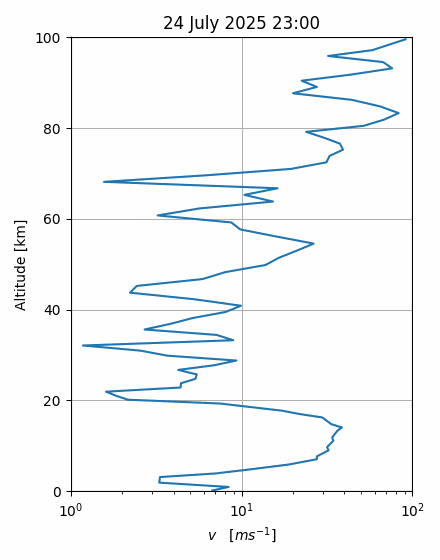an atmosphere of data
The global demand for resilient space-based infrastructure and accurate navigation systems is accelerating as the Space Economy expands—projected to surpass USD 1.8 trillion by 2035. This growth is driven by increased satellite deployments, GNSS-reliant services, and emerging markets like space tourism and suborbital transport.
Access to upper atmospheric data is critical for safe, efficient, and sustainable operations in these domains. Our Atmosphere API delivers real-time and forecast data for the thermosphere and ionosphere, helping customers access thermosphere density information for more accurate orbit calculations, and total electron content information for GPS corrections during times of elevated geomagnetic storms.
ionosphere plasmasphere electrodynamics
Forecasts of ionospheric electron density and Total Electron Content (TEC) are essential for applications such as GNSS positioning, HF radio communication, space weather monitoring, and defense operations. Ionospheric variability caused by solar activity and geomagnetic disturbances can degrade navigation accuracy, disrupt communications, and affect satellite-based services. Reliable forecasts help users anticipate outages, correct positioning errors, and maintain operational continuity.
The Ionosphere Plasmasphere Electrodynamics (IPE) Forecast System, developed by NOAA’s Space Weather Prediction Center, models the complex interactions between the ionosphere, plasmasphere, and magnetospheric electric fields. Coupled with the Whole Atmosphere Model (WAM), the IPE system produces high-resolution forecasts of global electron density and TEC. Through the Atmosphere API, users gain access to 10 minute resolution ionospheric data with forecasts extending 42–48 hours ahead.
Figure: IPE TEC map forecast.
whole atmosphere model
Forecasts of thermospheric density, composition, winds, and temperature are critical for industries such as satellite operations, launch planning, and aviation. These parameters affect satellite drag and orbit prediction and wind-shear in rocket launch, and high altitude winds for HAPS flight planning. Accurate upper-atmosphere forecasts support better decision-making, reduce operational risk, and improve resilience.
The Whole Atmosphere Model (WAM), developed and maintained by NOAA’s Space Weather Prediction Center, delivers high-resolution 3D forecasts of the upper atmosphere. Our Atmosphere API provides access to gridded WAM data—including winds, density, and temperature at 10 minute time steps, forecasting ahead 42–48 hours.

Figure: WAM forecast vertical wind profile.